Varberg Fortress is a powerful defence structure with a long history. Danes and Swedes have fought over it, and it was once one of the most modern fortresses in Europe. Later, prisoners were held here, and today you are welcome as a tourist.
Table of contents
Varberg Fortress
Varberg Fortress is an interesting destination that you can experience by wandering around the castle grounds, visiting Halland's cultural history museum or going down into old prison cells on a guided tour. Or why not try an apple pie, baked from the same recipe used in 1597?
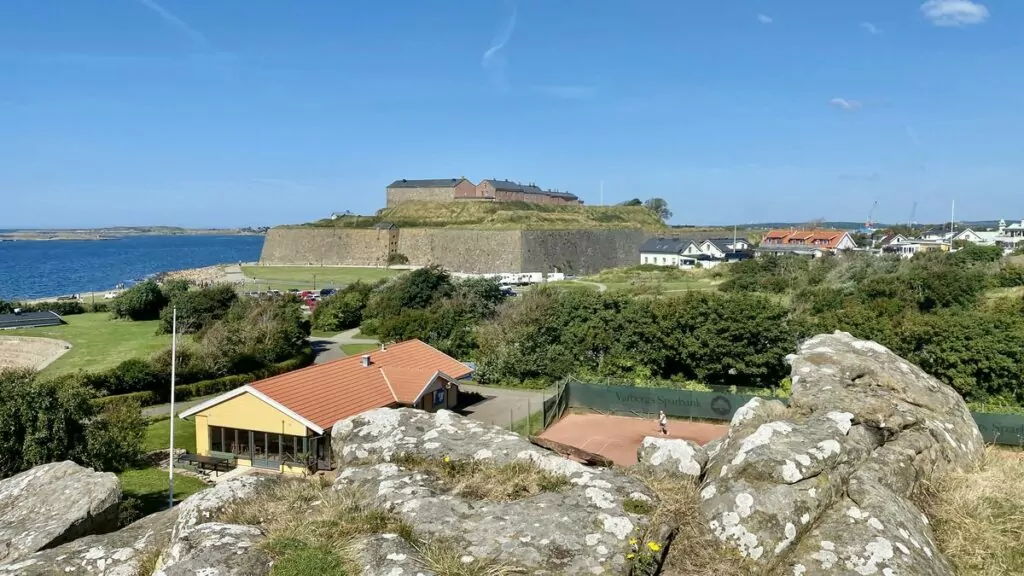
Varberg Fortress is located on the west coast, in the centre of Varberg, in the province of Halland.
800 years of war, defence, imprisonment ... and musem
The cliff where Varberg Fortress is located has been used to keep watch since prehistoric times. When the Danish King Erik Klipping was murdered in 1286, Jacob Nielsen, Count of Northern Halland, was accused of the murder. To defend himself, he built a castle on the cliff. This was the very first castle, and the northern wing of the castle still remains from this time.
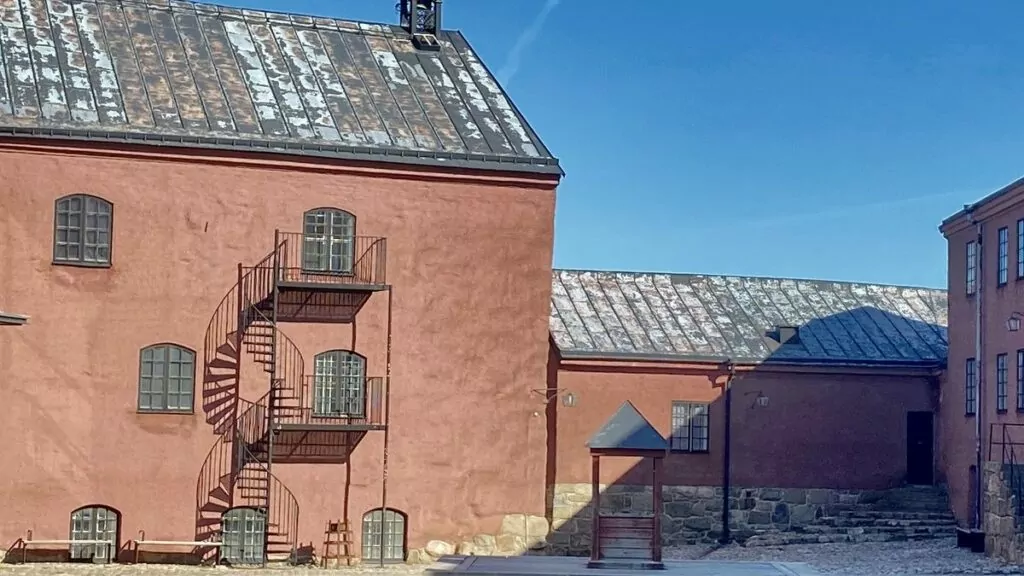
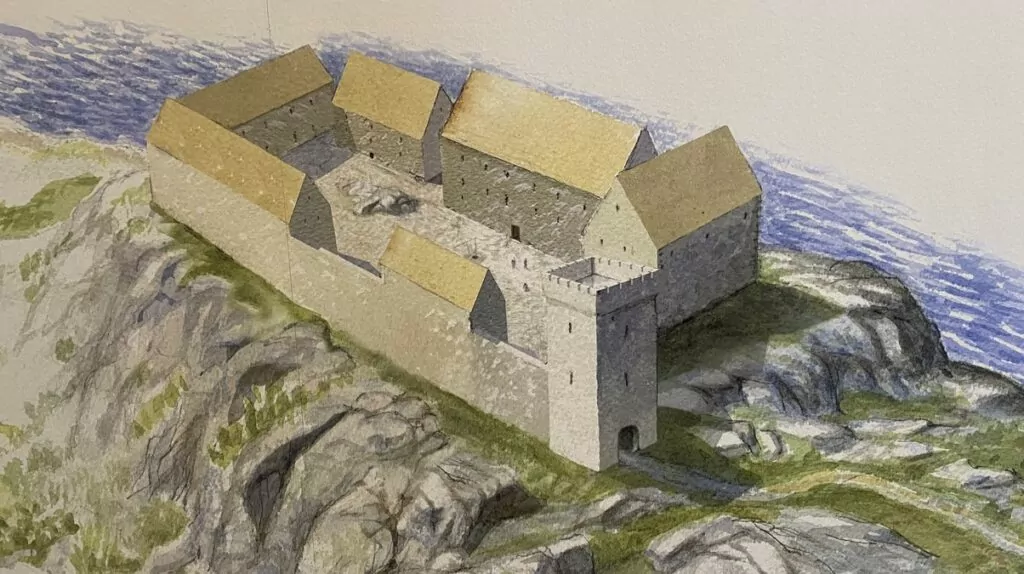
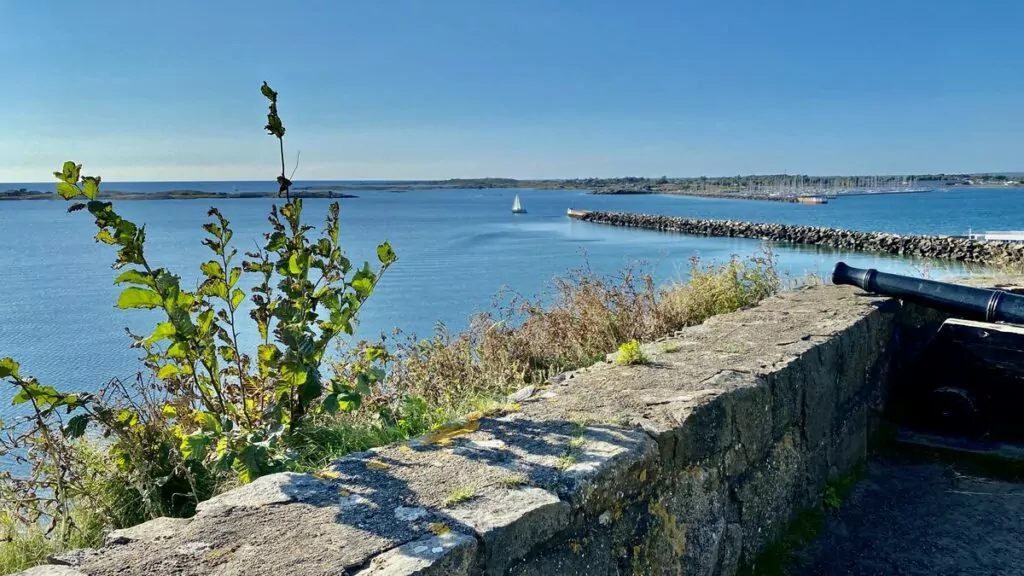
The 14th century - a troubled time
The 14th century was a turbulent time, and Varberg changed both government and kingdom several times. The castle became one of the crown's castles and the kingdom's royalty came and went, occasionally staying in the castle. From 1365 things became a little calmer, and Varberg remained Danish for almost 300 years.
War between Swedes and Danes
In the 16th century, the art of war was developed and now fighting troops could use crossbows and cannons. During the Nordic Seven Years' War, the castle was first captured by the Swedes in 1565, only to be retaken by the Danes shortly afterwards. The Danish troops shelled the castle under the command of Daniel Rantzau, who in the heat of battle lost his head on the cliff from which they fired. Today, his monument can be found on the rock, which has been named 'Rantzau Rock'.
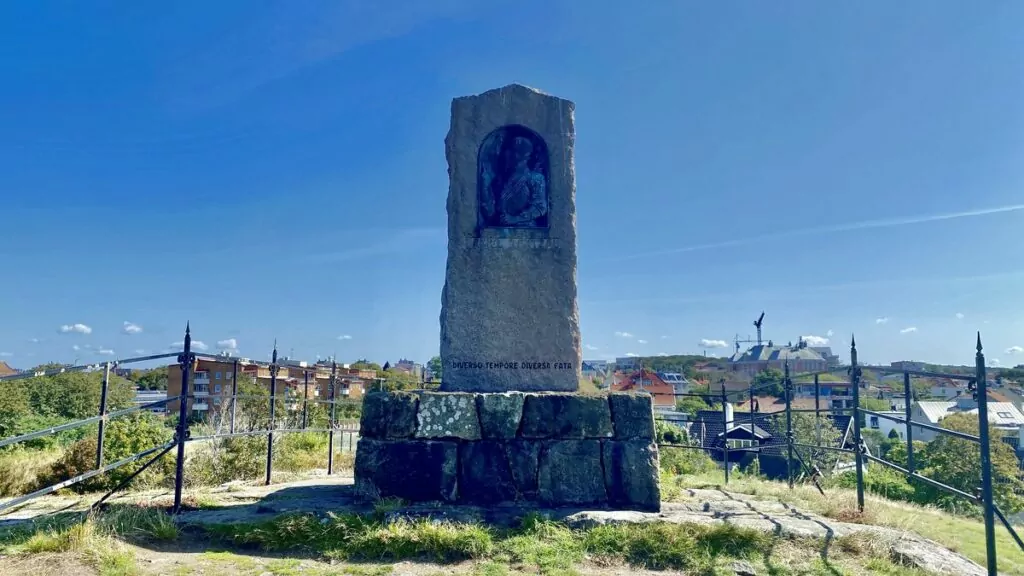
One of Europe's most modern fortresses
When the fortress became Danish again, King Christian IV built an effective defence system with stone-lined earthworks and bastions, and Varberg Fortress became one of the most modern fortresses in Europe. However, the fortress never had to test its effectiveness, as war never broke out again. After the Peace of Brömsebro in 1645, it was decided that Halland and Varberg would become part of Sweden.
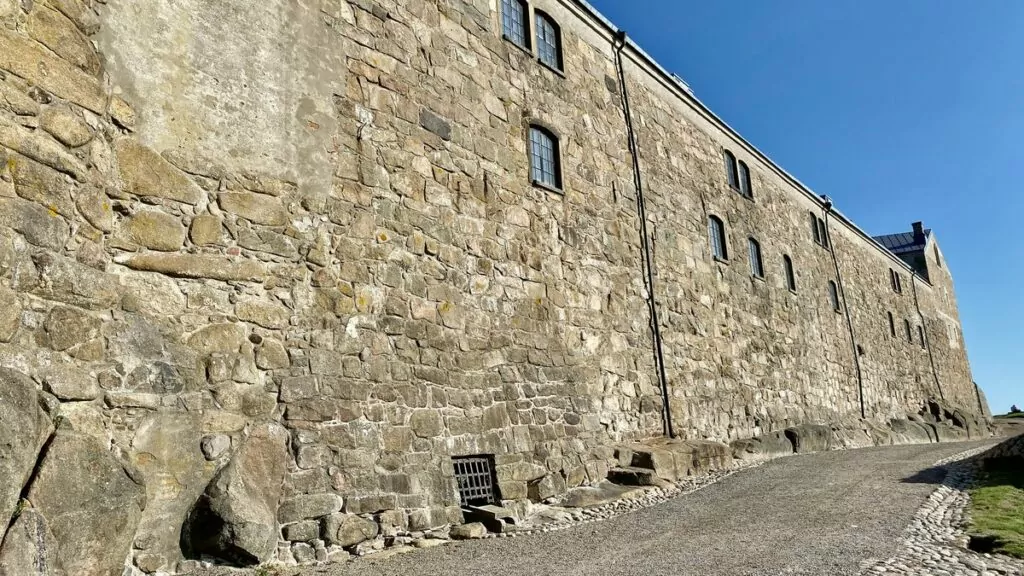
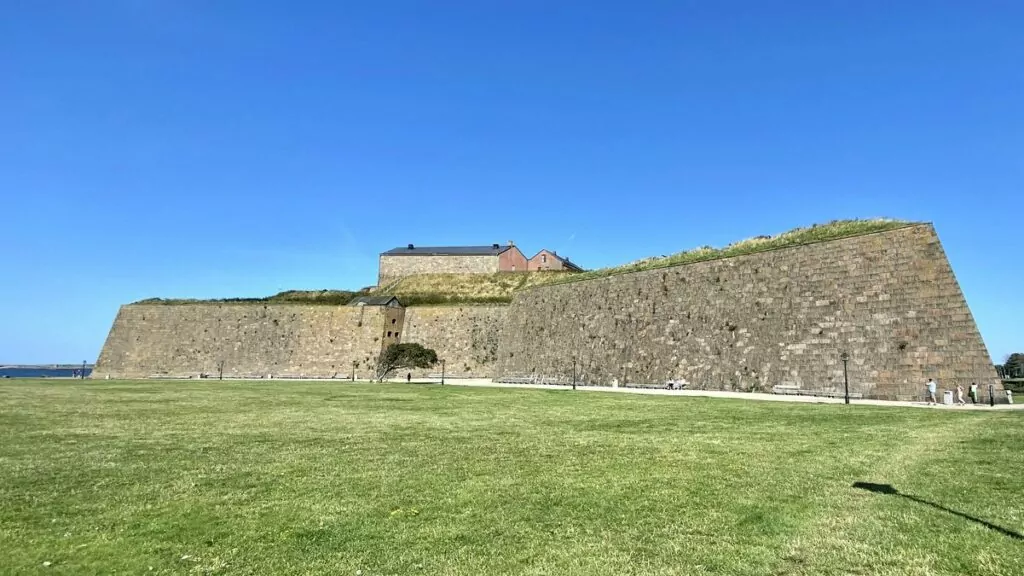
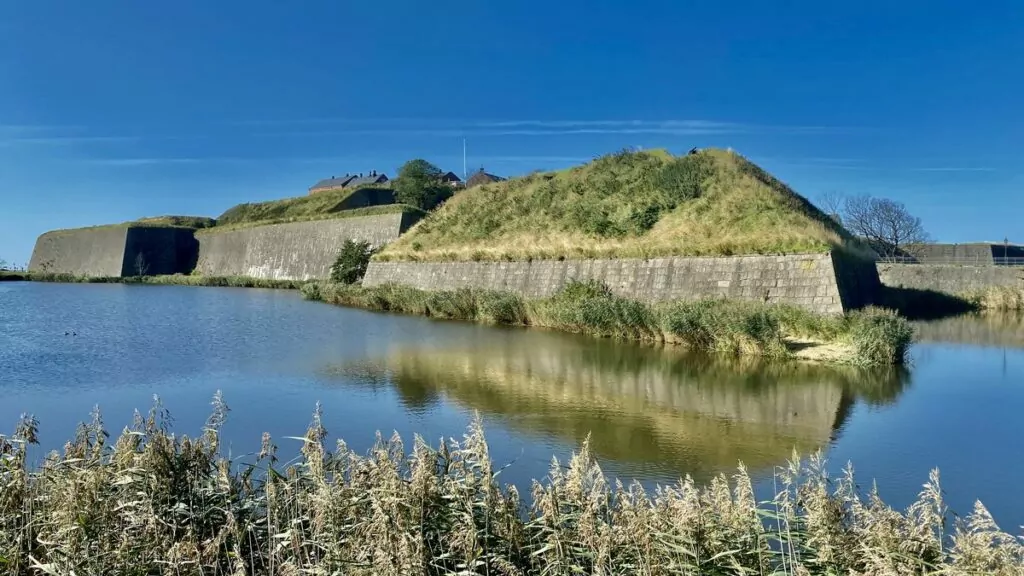
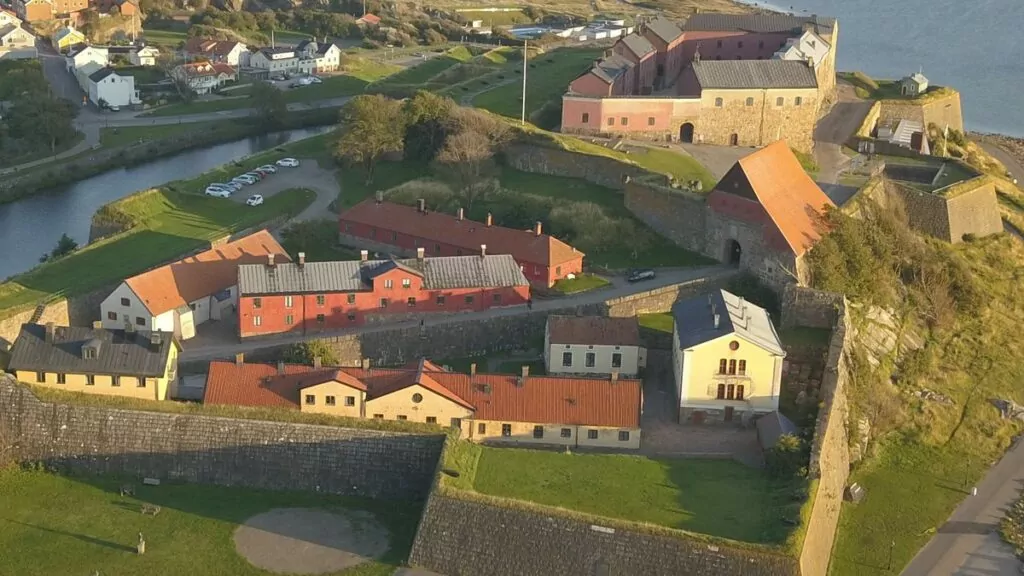
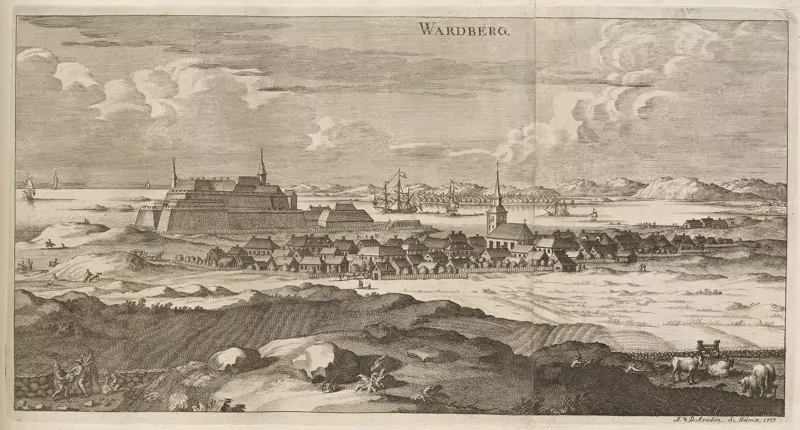
Prison and working in a quarry
In the 19th century, the fortress ceased to be a military facility and became a prison, with prisoners forced to work hard in the nearby quarry. In the 20th century, it became a museum and also welcomed hostels and restaurants on its premises.
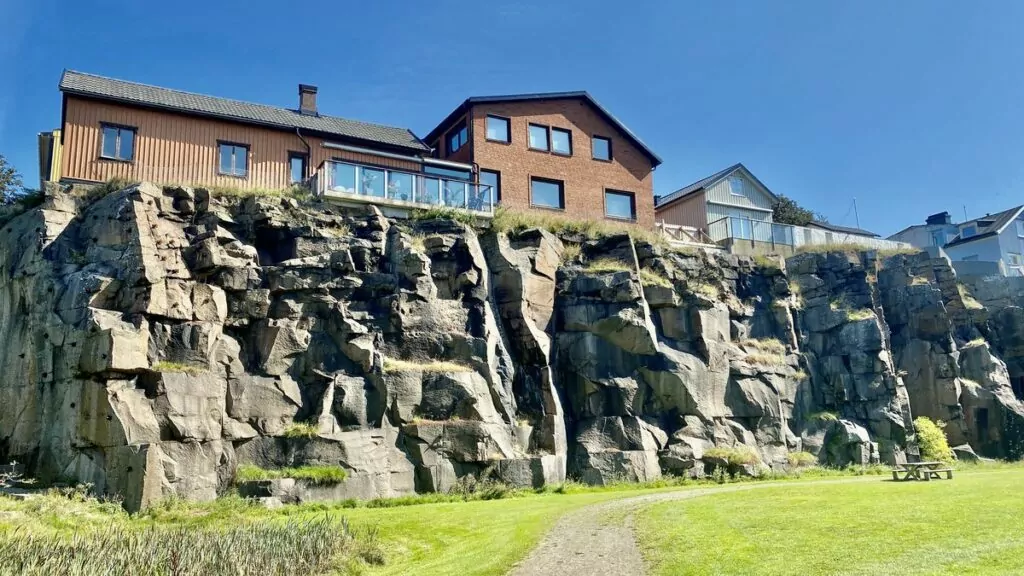
Visiting Varberg Fortress
Varberg Fortress is powerful, and a visit here is interesting and fascinating. The fortress area is relatively large, and you are welcome to walk around the buildings and ramparts free of charge at any time of the year.
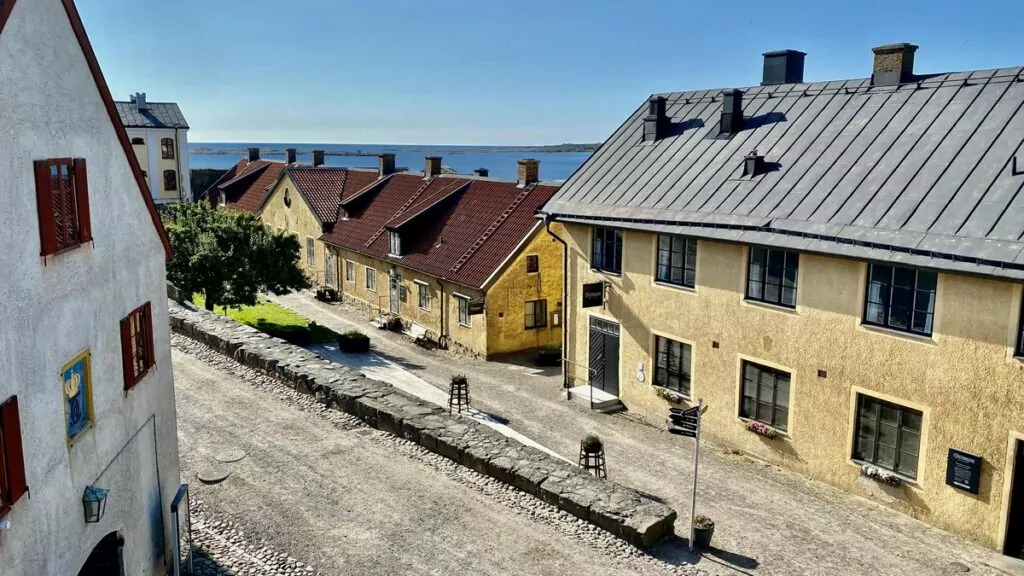
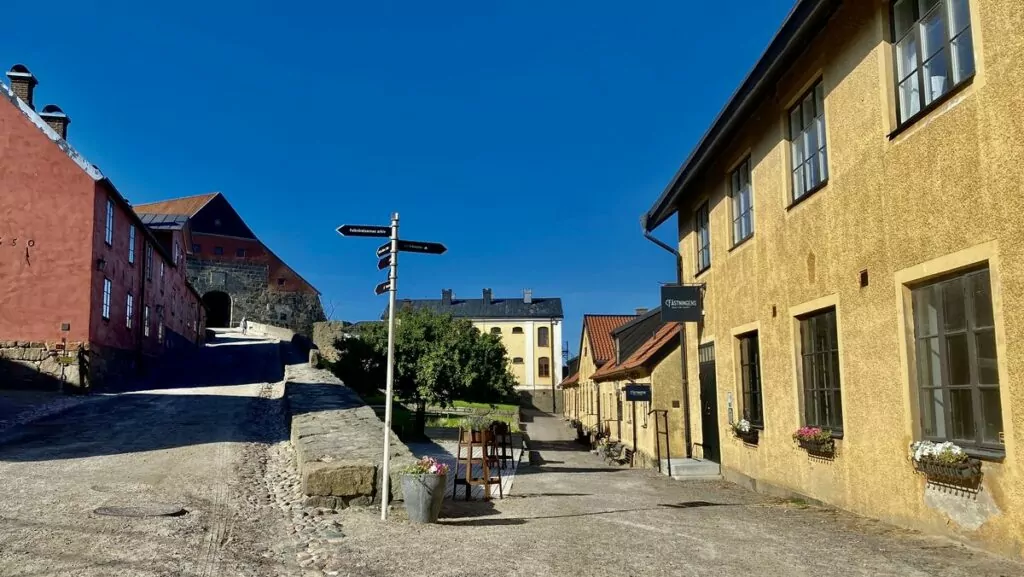
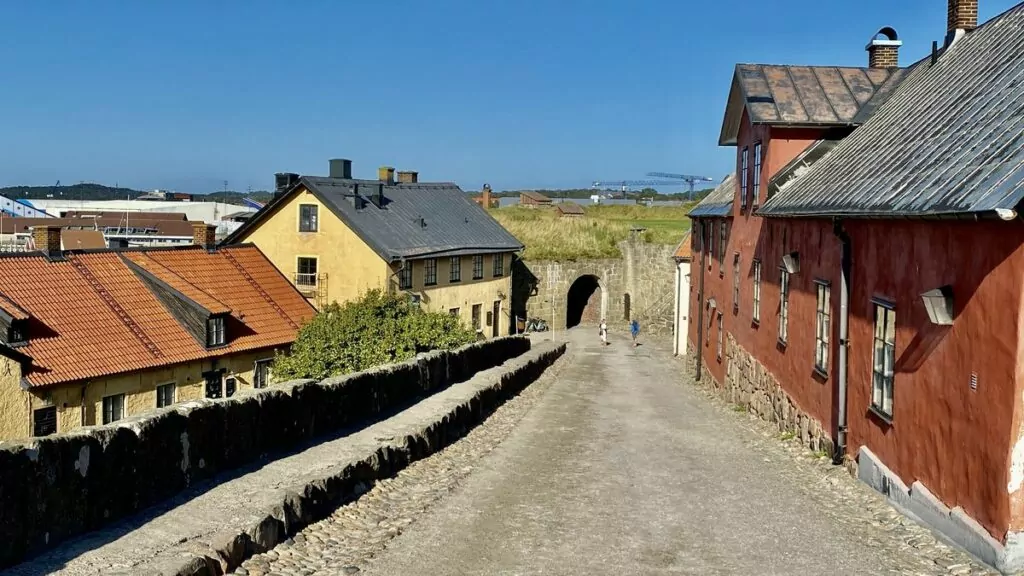
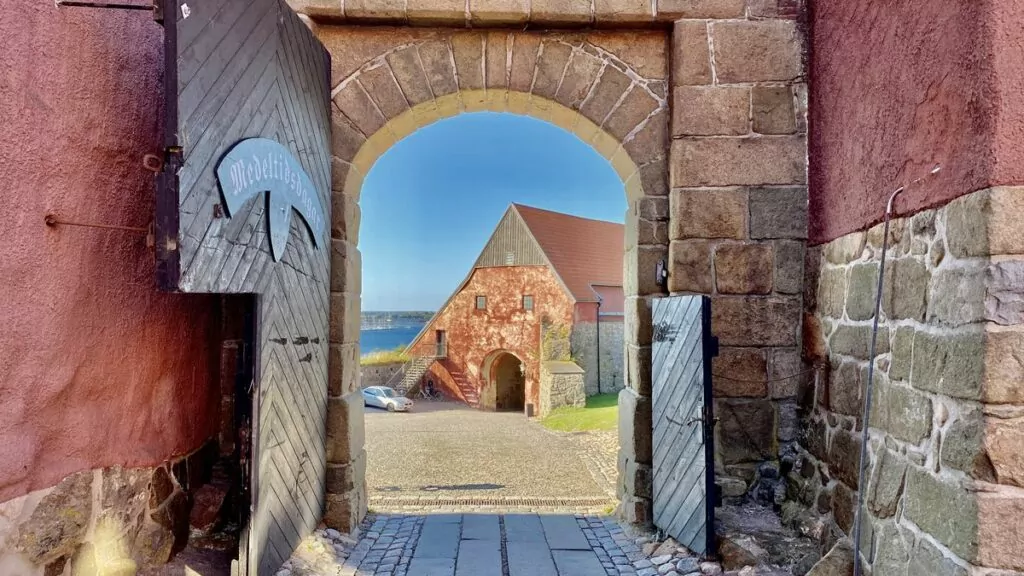
The central buildings of the fortresses, around the courtyard, are all red staircases and therefore almost look like they date from the same period. However, they do not. The oldest building was built in the 13th century, while many others were built in the 16th century or later. Here, in the courtyard, you will also find the entrance to the Halland Museum of Cultural History.
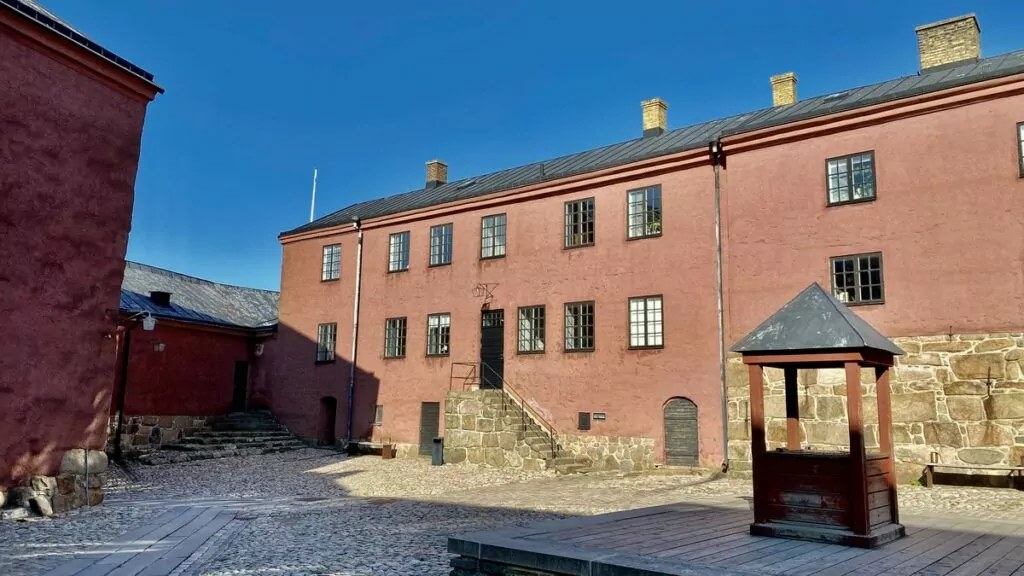
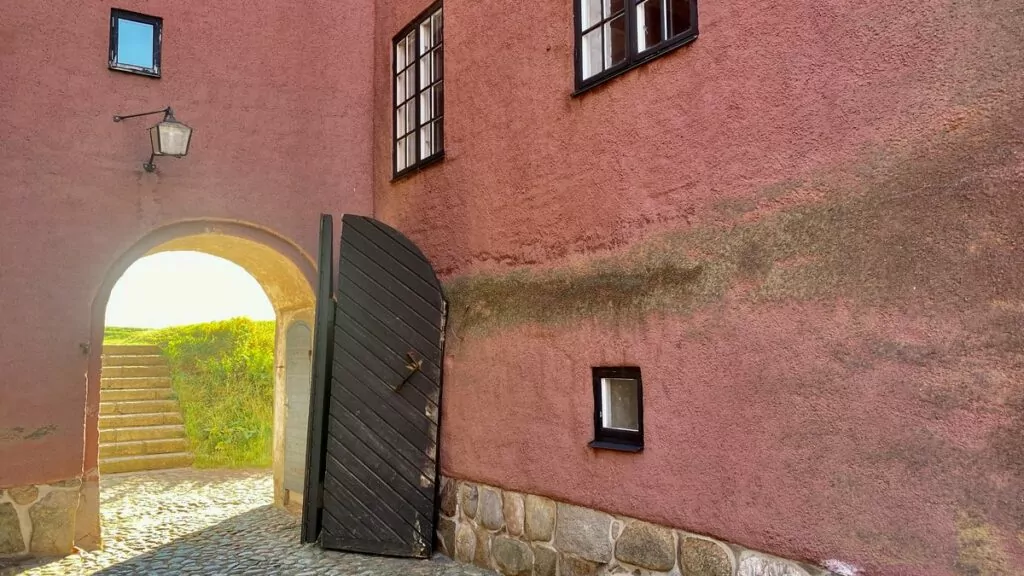
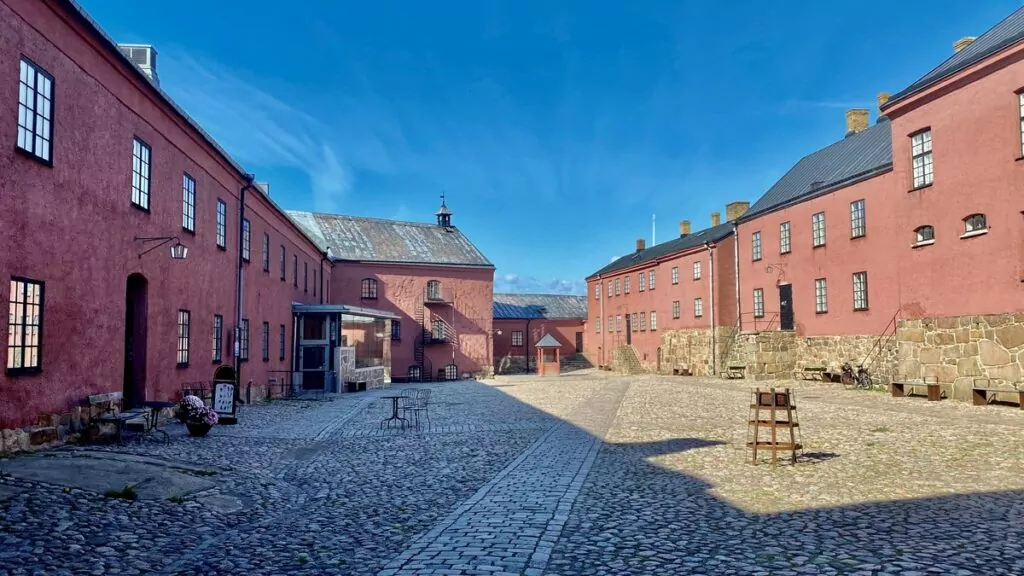
Guided tours of Varberg Fortress
At certain times it is possible, for a fee, to join a guided tour of the fortress. During the high season, tours are given daily, and in late spring and early autumn there are often opportunities for weekend tours. Current times can be found on the museum's website.
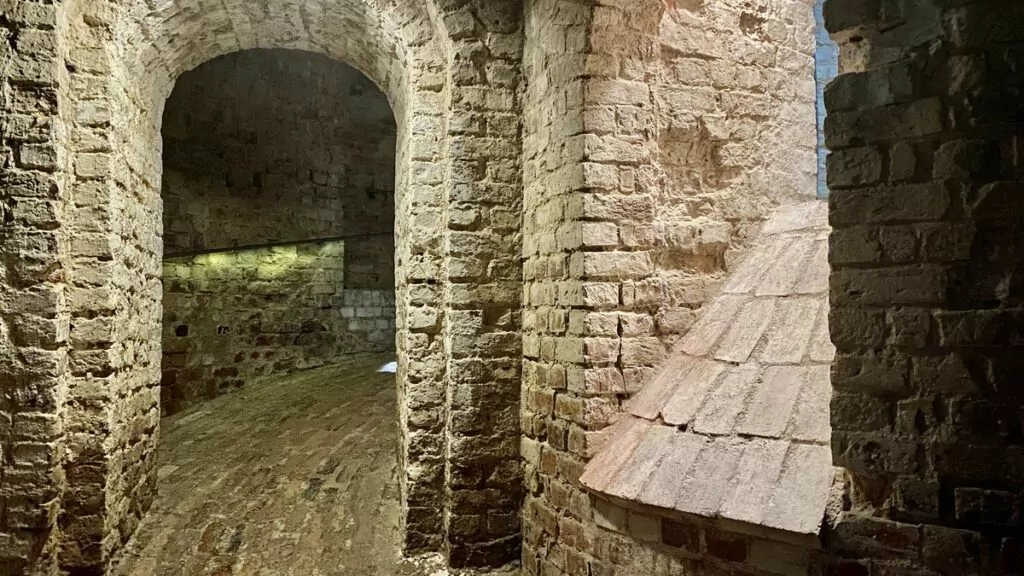
On a guided tour, you get to go down into parts of the fortress that you can't otherwise visit. Among other things, we got to go down into the depths (15 metres!) through passages that circled around, around, around. At the bottom, you get to hear about how the defence was planned here, and how they built to be able to fire their cannons. Some tours are also dramatised, with actors in period clothing.
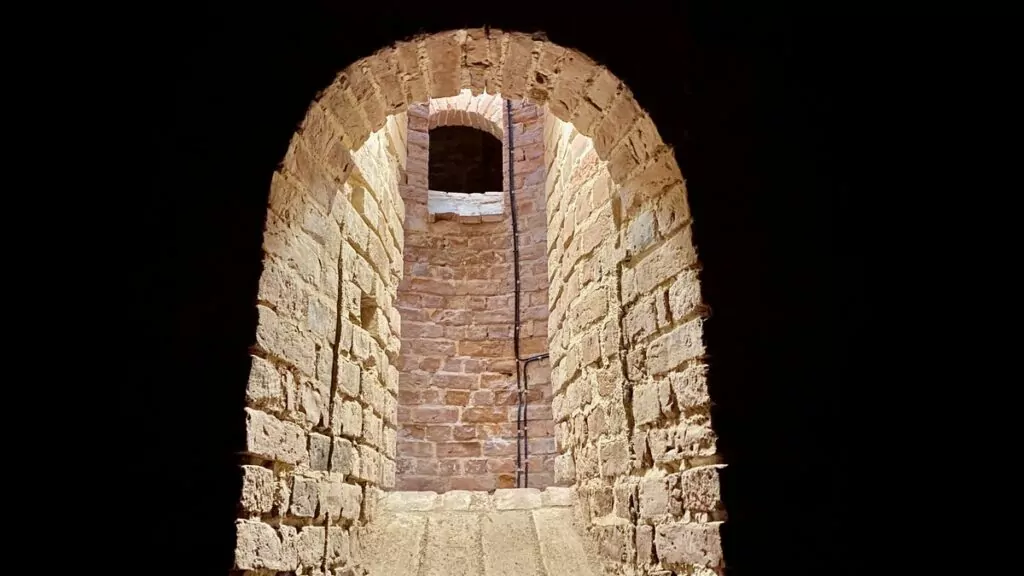
You can also visit the dungeons of the fortress and hear about what it was like to be a prisoner here in the past. Huh, we say!
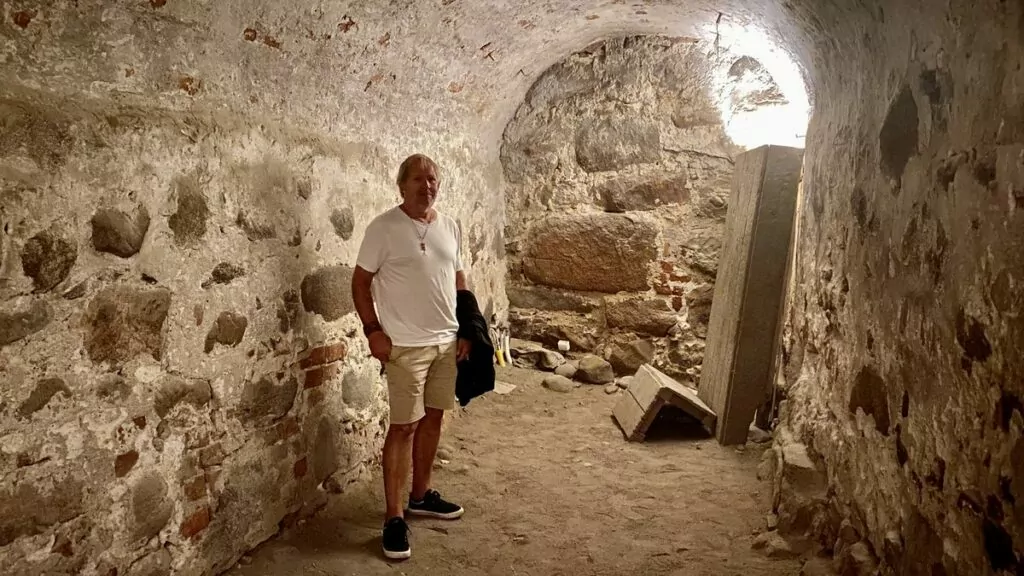
Halland Museum of Cultural History
In the courtyard there is an entrance to Halland's cultural history museum. Here you can visit several different exhibitions, both permanent and temporary. The permanent exhibitions are about "Halland through the ages" and the Bockstensmannen.
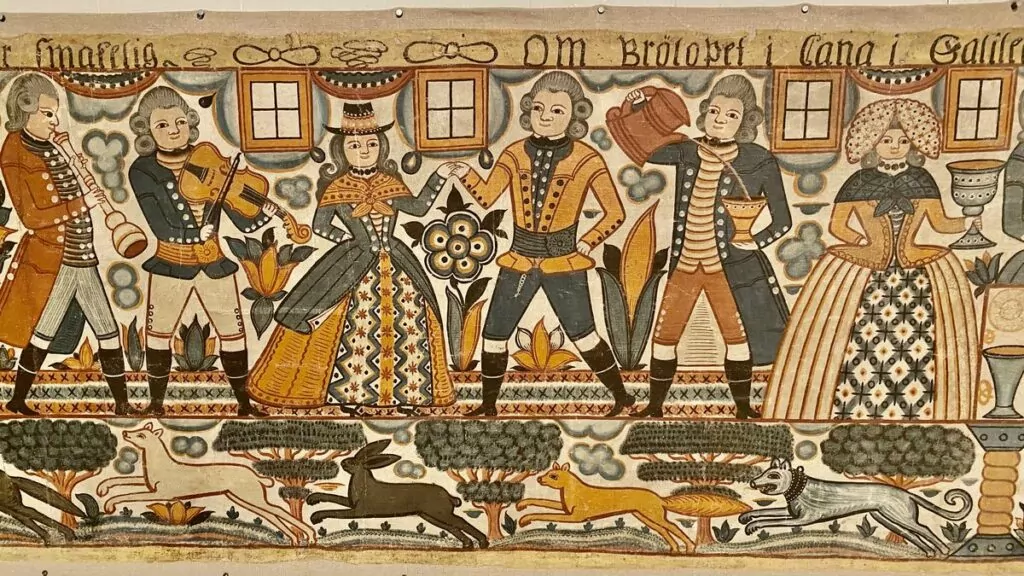
The exhibition on Bockstensmannen, the world's only known piled-up moss corpse, is both beautiful and exciting. Here you can listen to scientists and also see the skeleton, the pile and the intact costume, which is still intact. unbelievable well preserved. Who was the Bockstein Man? Why was he murdered, and why did they feel the need to pile him up in a bog? Fascinating to think about!
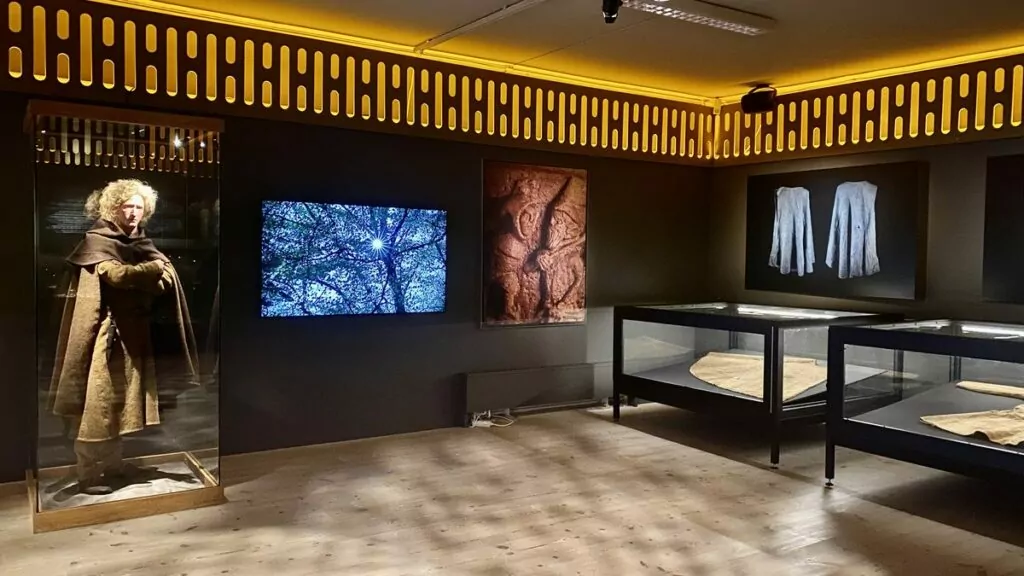
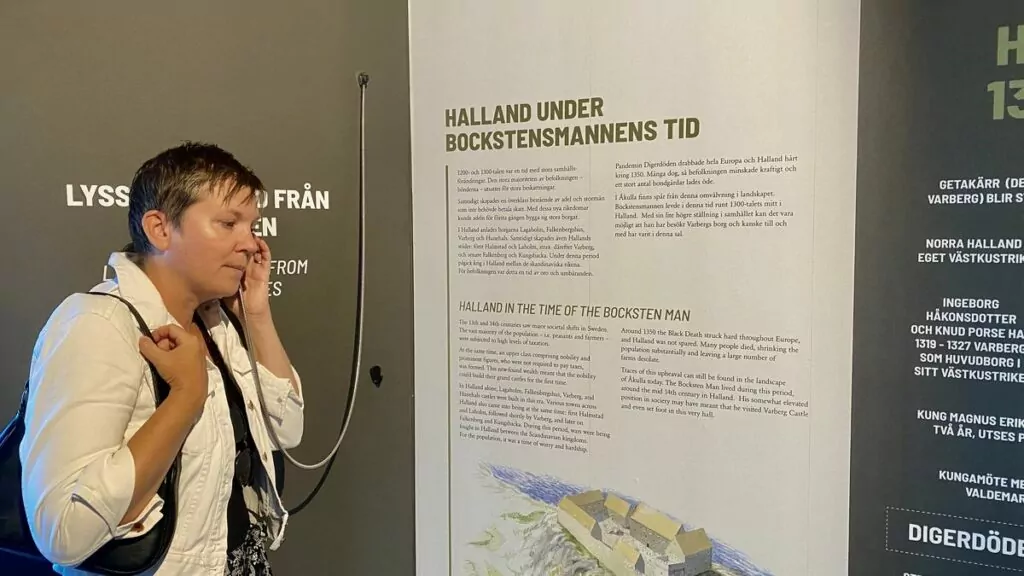
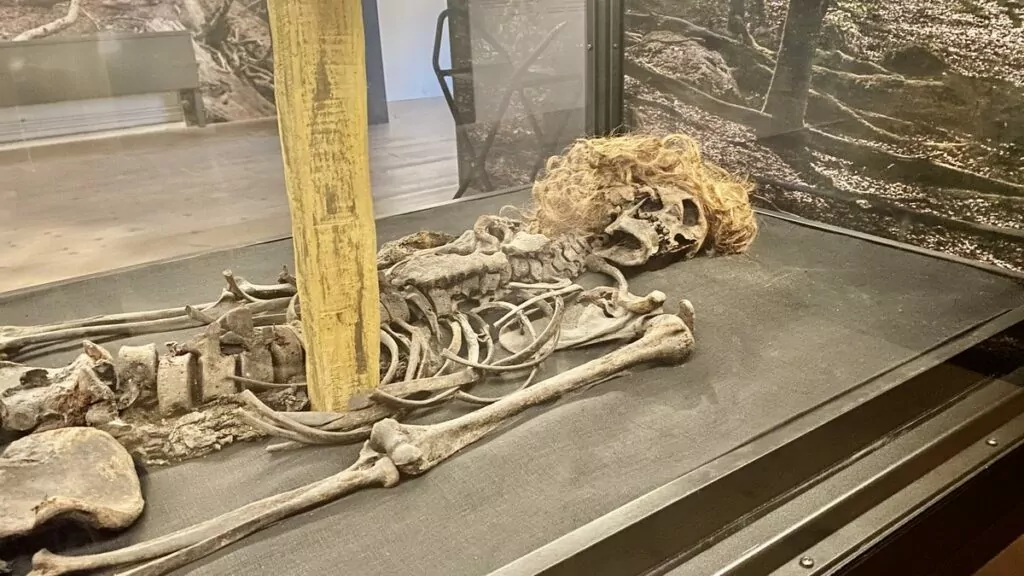
The temporary exhibitions vary, of course. Just now when we were here you could see a delicious fashion exhibition with Bea Szenfeld & Stina Wirsén.

Café Längan with apple cake with recipes from 1597
In connection with the museum there is a small café serving sandwiches and pastries. Here you can also eat an apple cake baked according to an original recipe from 1597. The apple cakes were very tasty already in the 16th century, we can reveal. Yummy!

There is also a restaurant on the site, the Fortress Terrace, which offers great views of the sea.
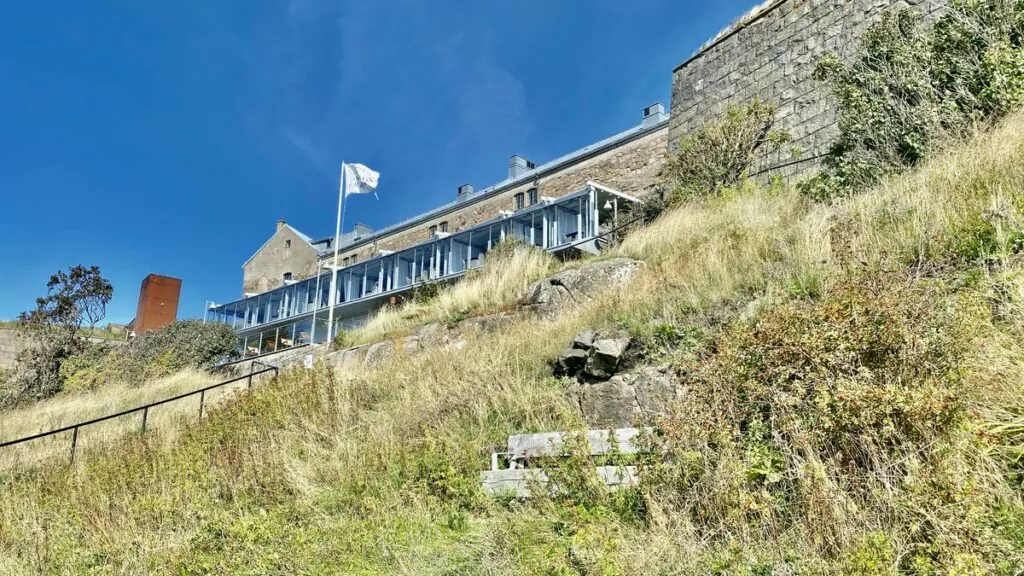
Where can you stay or park your motorhome?
For those who want to stay within the walls of Varberg Fortress, the fortress's B&B/Hostel is available. Otherwise, there are of course several different hotels in Varberg, such as Varberg's coastal hotel, Clarion Collection Hotel Fregatten and Varbergs Stadshotell & Asia Spa.
For those who come with a motorhome, there is a parking space in the centre of the harbour. The location is excellent and the service is ok, but the price (370 SEK/day in high season) is a bit of a mouthful. For that price, which is more like a camping price, one would at least have wanted grey water drainage and someone to contact when it turned out that our code for the service house was only valid for one day, even though we paid for two.
There are also car parks for motorhomes just behind the fortress, but they are not allowed to stay there at night. There are also car parks on Getterön.
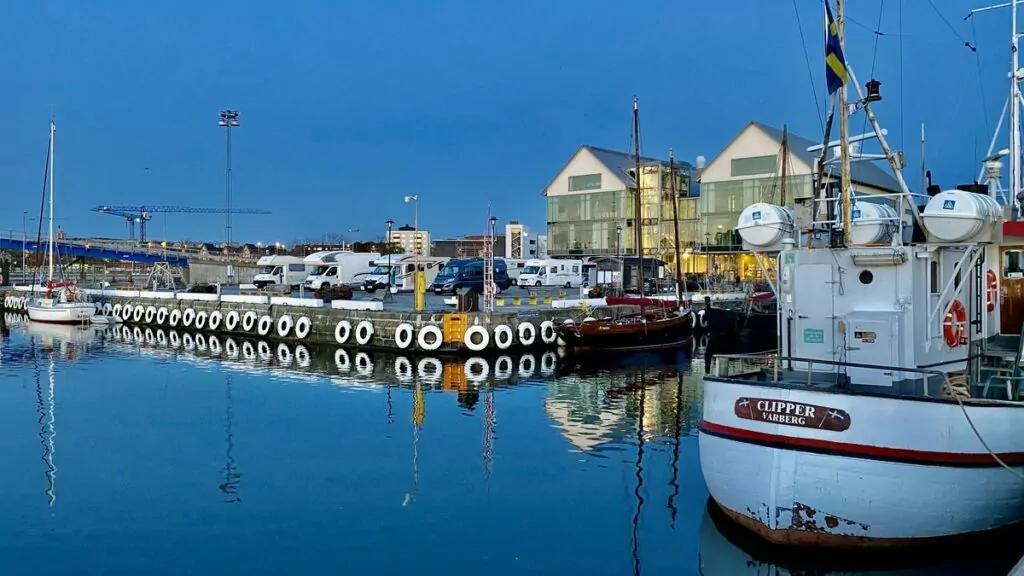
Video "Varberg Fortress"
More to see and do near Varberg Fortress
While you are in Varberg you can check out the nice cold bath house and then walk along the seafront, possibly all the way to Apelviken. In the municipality you can also visit the world heritage site Grimeton radio station. It is also not far to Falkenberg, with Gekås Ullared and pizzeria Lilla Napoli. Continuing south, you can discover beautiful Halmstad and Tylösand.
Tjolöholm Castle - a visit to a fairytale world
Tjolöholm Castle is a marvellously beautiful building, with sumptuous architecture and exciting technical convenience solutions from the 20th century...
Beaches in Tylösand - Svärjarehålan and Tjuvahålan
Now we have come home to Sweden, after our tour of Poland and the Czech Republic, and our...
What to do in Varberg - 13 tips for a lovely west coast town
What to see and do in Varberg? Varberg is a lovely west coast town that offers...
Things to do in Falkenberg - 12 sights and experiences
What to see and do in Falkenberg? Falkenberg is a lovely west coast town with much to offer....
Lilla Napoli in Falkenberg - the pizzeria where you book yourself in
Lilla Napoli in Falkenberg is the pizzeria for those who want to experience an authentic Neapolitan pizza, baked...
Gekås Ullared - Sweden's largest tourist destination
Gekås Ullared is today Sweden's largest tourist destination, with around 4.8 million visitors every year. We have...
What to do in Halmstad - 16 sights and experiences
What to see and do in Halmstad? Halmstad is a pleasant city on the west coast, with...
What to do in Tylösand - 13 tips for a summer paradise
What can you see and do in Tylösand? Tylösand, located in Halmstad, is in the summer...
Swedish vineyards - 4 farms with Swedish wine
Do Swedish vineyards exist? Yes, they do, and Swedish wine is also on the rise in...
Swedish Hallandsvägen - FREEDOMtravel Themed Roads
Writer: Peter Bergström The Swedish Halland Road is a themed road that takes you through beautiful Halland,...
Varberg's coastal hotel - a place to long to return to
Guest writer: Magdalena I have been to Varberg on a couple of occasions in the past and visited the city's...
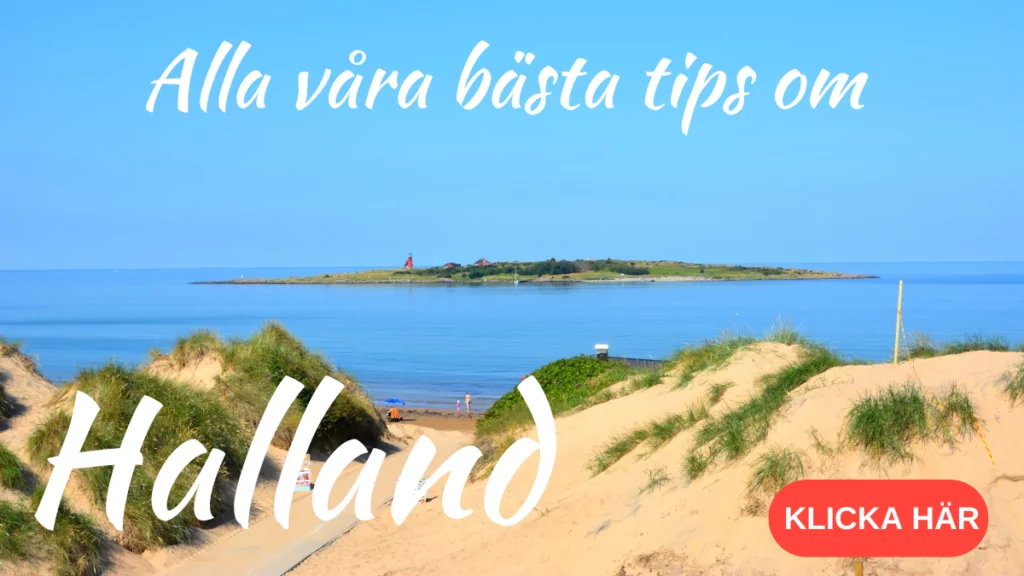
Have you visited Varberg Fortress?
How was your experience? Do you have more tips on what to see and do in the neighbourhood?
Facts about Varberg Fortress
- Landscape: Halland
- County: Halland County
- Municipality: Varberg
- Developer: Jacob Nielsen
- Start of construction: Approximately 1287
- building materials: Stone
- Owners: State Property Agency
- The name: The first part of the name - ward - means guard.
Services and practical information
- Opening hours: The courtyard is always open for strolling around. The museum's opening hours vary throughout the year. See the the museum's website for up-to-date info
- Price: Visiting the fortress area is free of charge. Museum visits cost 80 kr for adults, 6o kr for students and pensioners and are free for children (2021). Guided tours cost 120 kr for adults and 60 kr for children (2021).
- Guided tours: Tours are given at specific times. A tour takes 60 minutes and has an age limit of 6 years. The tour includes hilly terrain and steep stairs.
- Food service: The Fortress Terrace offers a café, restaurant and bar. There is also a museum café.
- Shop: There is a souvenir shop at the museum's reception.
History of Varberg Fortress
- Prehistoric times: The rock where the fortress is located was used to keep watch. If enemies approached, a large fire (vårdkase) was lit to signal defence.
- 1287-1300: The Danish King Erik Klipping was murdered and Jacob Nielsen, Danish Count of Northern Halland, was accused of the murder. As a defence, he built a castle on Wardberget.
14th to 15th century
- 1305-1365: Varberg changed governments, and sometimes kingdoms, no less than eight times.
- 14th century: Varberg became one of the crown's castles. Magnus Eriksson, Albrecht of Mecklenburg and Queen Margareta occasionally stayed at the castle.
- 1343-1344: Magnus Eriksson, his wife Queen Blanka and their entourage were often in Varberg.
- 1365: From this time onwards, conditions became more stable and Denmark ruled Varberg for almost 300 years.
16th to 17th century
- 1563-1570: The Nordic Seven Years' War raged between Sweden and Denmark. Crossbows and cannons were now used and the castle building was no longer sufficient for defence.
- 1588: Construction of a fortress began with stone-lined earthworks and bastions. King Christian IV was the ruler and builder of the new defence system. The architect was Hans van Steenwinckel.
- 1618: Varberg Fortress became one of Europe's most modern defences. However, the fortress was never involved in war.
- 1645: The Peace of Brömsebro was concluded, where it was decided that Halland and Varberg would become part of Sweden.
18th century to the present
- 18th century: This was a peaceful era and the fortress was run by the Swedish military.
- 1830: Varberg Fortress ceased to be a military facility. instead, the defence forces invested in Karlsborg Fortress.
- 1848-1881: The fortress was used as a prison. A total of 400-500 prisoners were held here. A cellular prison was built in 1856 - before that the prisoners were kept in large common rooms. The prisoners worked in stonemasonry.
- 20th century: The fortress began to be used as a museum and for hostels and restaurants. Today the building is managed by the National Property Board in co-operation with the Halland Museum of Cultural History.
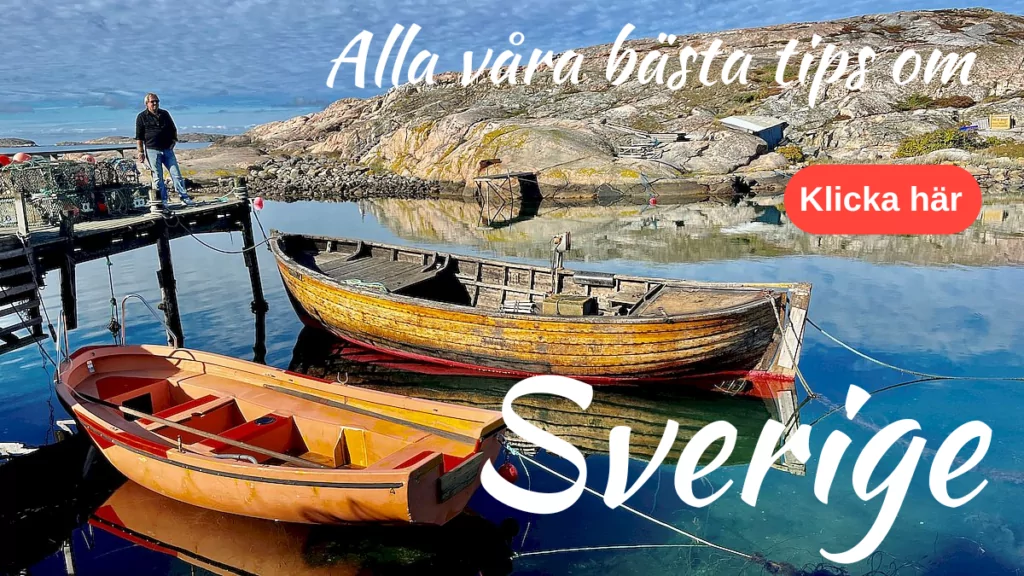


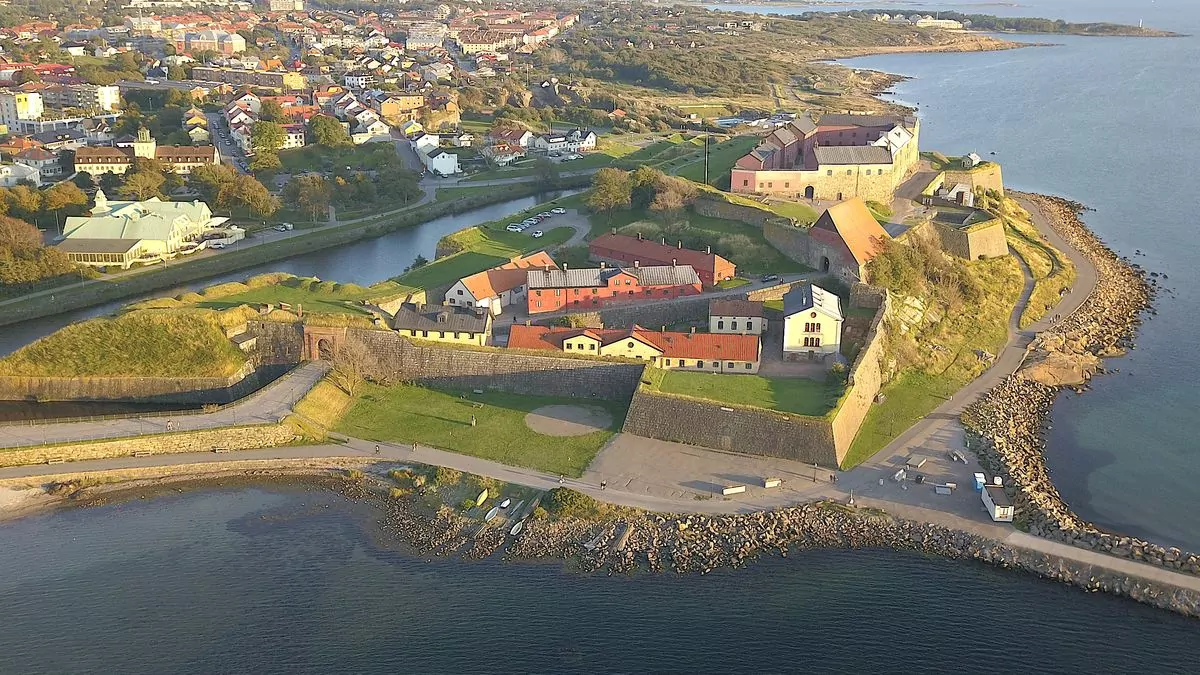






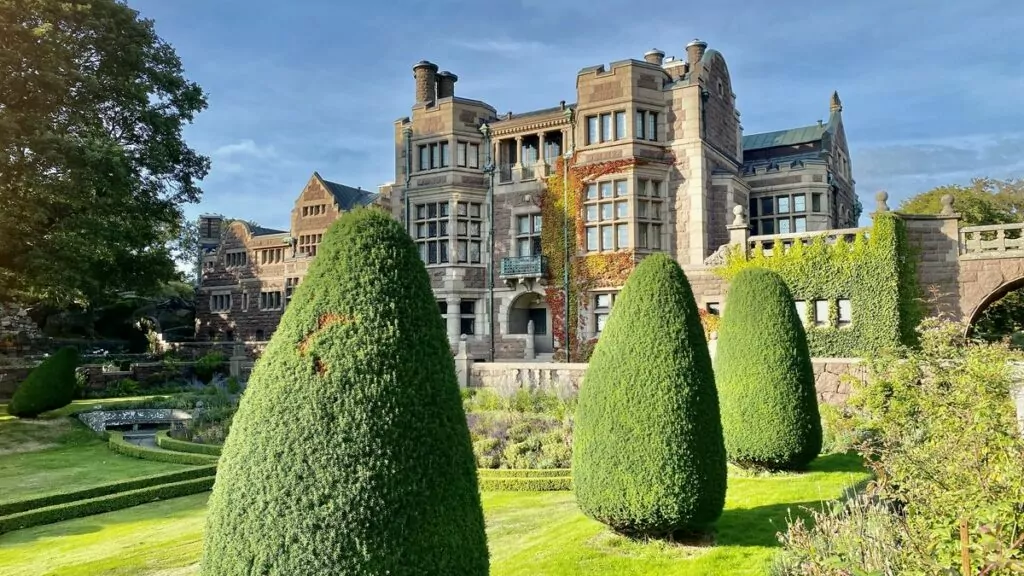
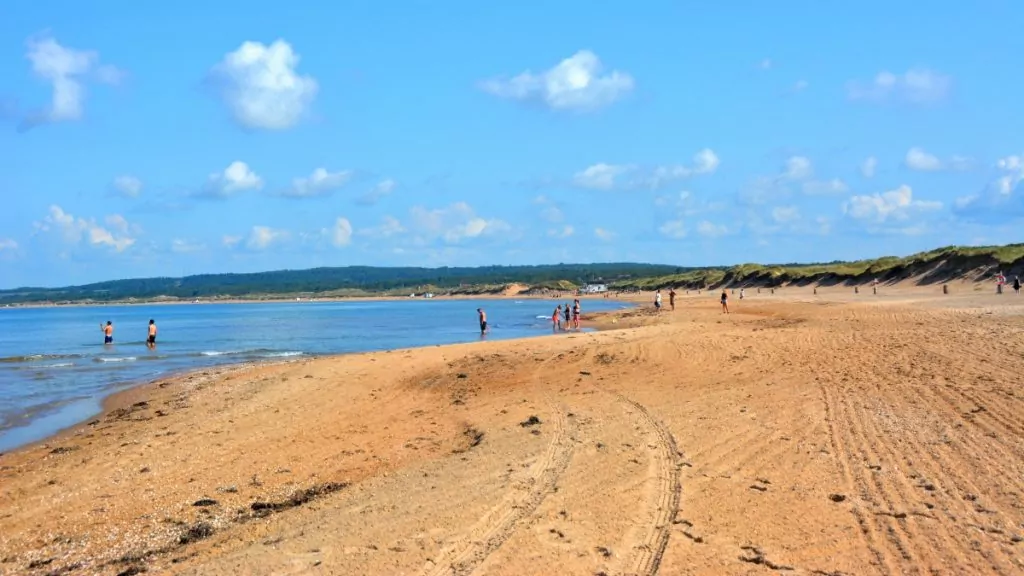
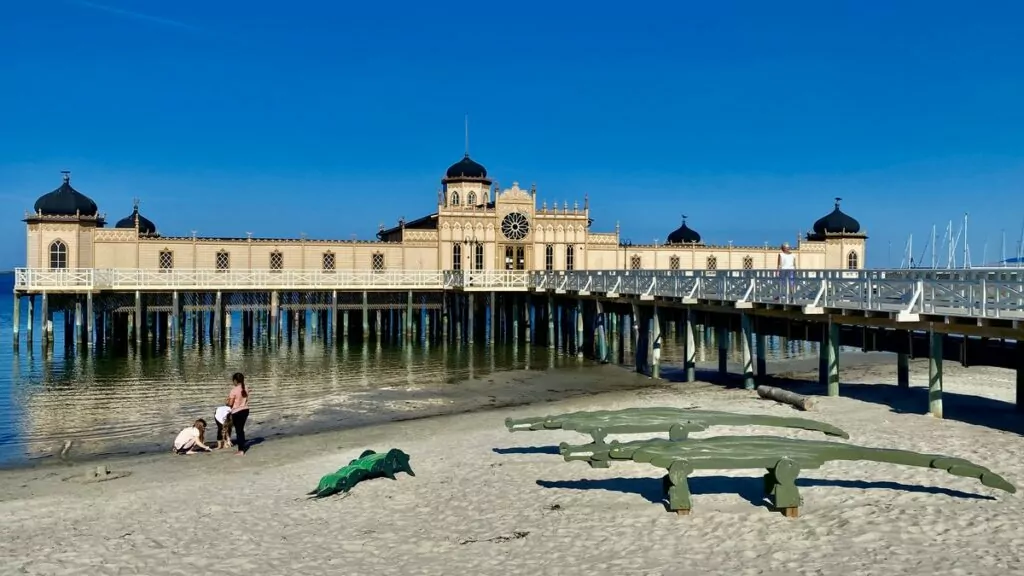
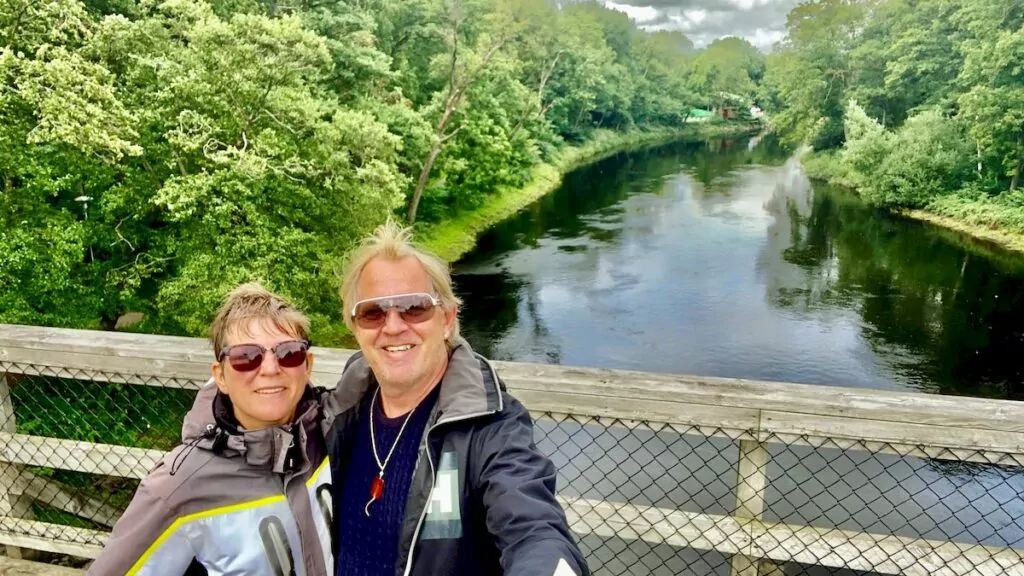
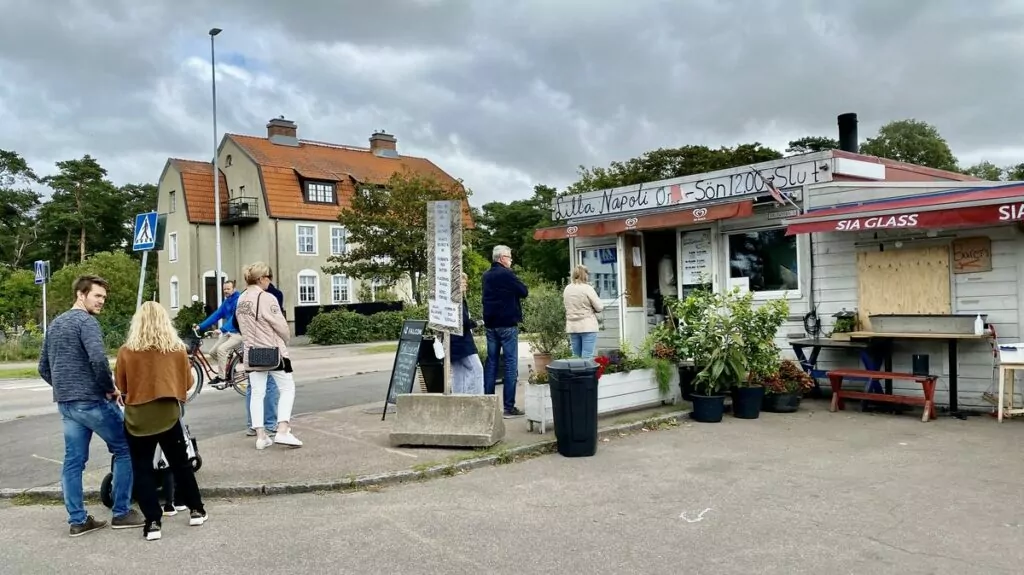

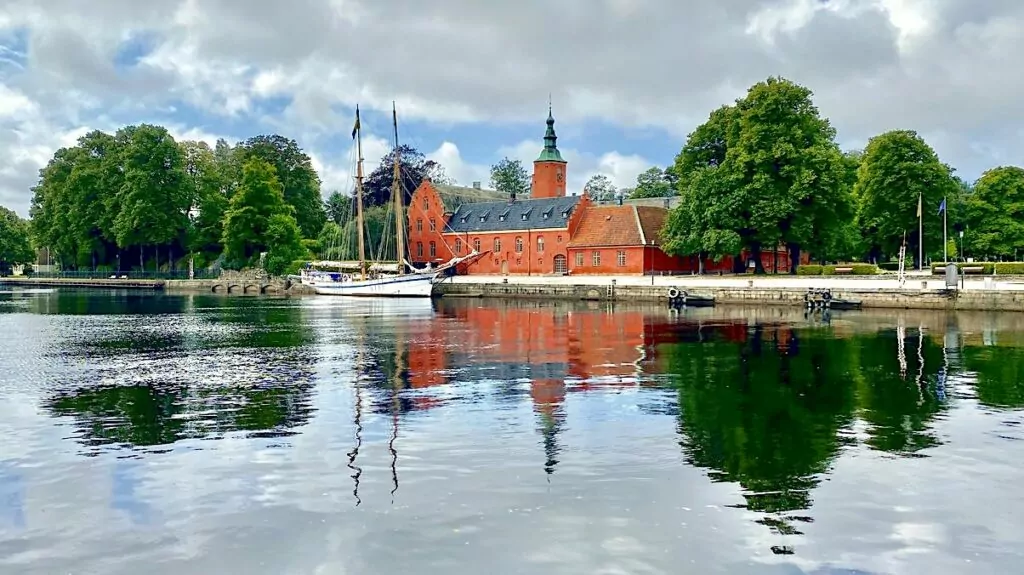
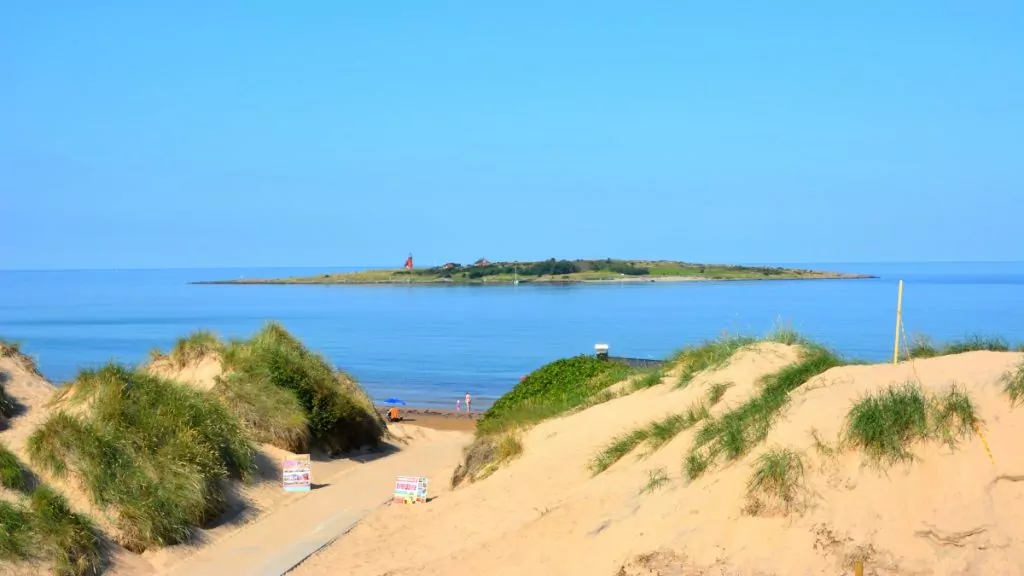

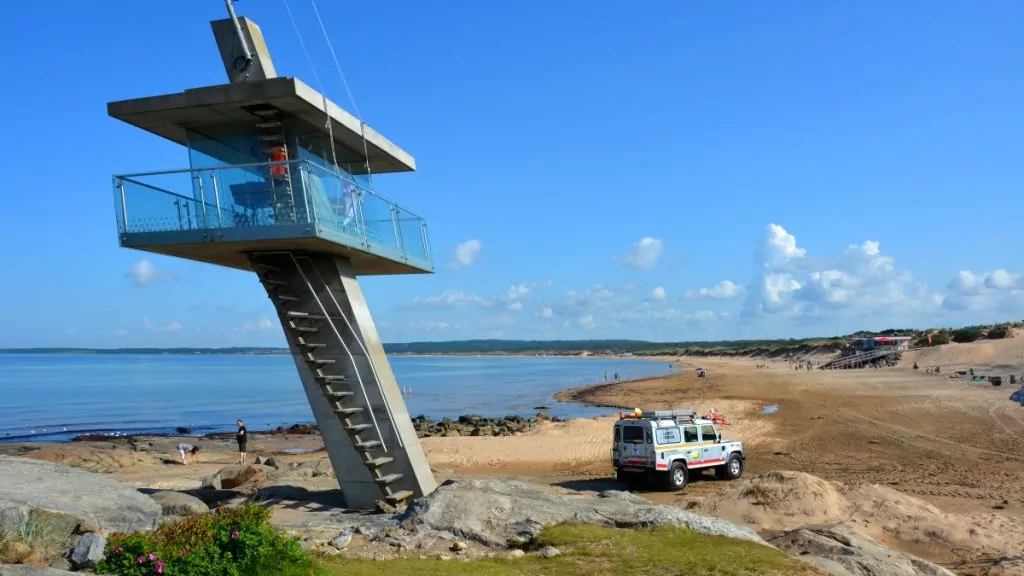

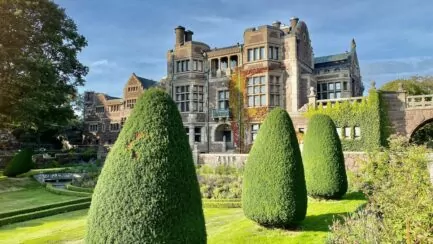
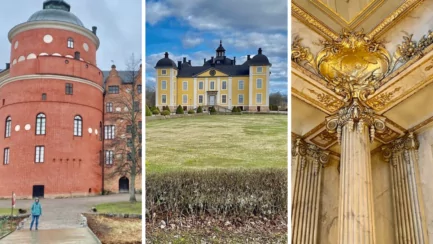



Monica E says:
Interesting with all our history and there is really a lot to see in our elongated former warrior country and great power. It is not much talked about except by historians and writers.
Very interesting is Varberg, a day goes fast. A bit sad that your car park did not work better and at that price. But but, just to forget when there is good later.
Keep it nice, summer almost back with nice weather, hope you have it too. Call me Monica E now, if I remember it then I do not know, saw that someone else commented with the same name and it was not me.
02 September 2021 - 13:49
Helena says:
There is certainly a lot of interesting history in our country! Fascinating to travel around and learn about it in different ways. And yes, it is true that you are two Monica who comment from time to time 😉 I, as an admin, see a clear difference, because I see the e-mail addresses, but they are not visible to other readers.
03 September 2021 - 20:27
Travel Friday/Annika says:
Lived in a small attic apartment overlooking Varberg Fortress for 1.5 years, fantastic view to wake up to. Love Varberg, the fortress, and the promenade that runs along the waterfront next to the fortress. Also all the Christmas-autumn markets etc that are held (or yes, were held...) there, SO cosy!
02 September 2021 - 17:36
Helena says:
How cosy it sounds! Agree, Varberg is nice, especially the fortress and the promenade. We followed it over to Apelviken!
03 September 2021 - 20:28